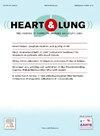Bone mineral density and TAVR outcome: A comparative analysis between patients with enhanced and non-enhanced TAVR CT scans
IF 2.4
4区 医学
Q2 CARDIAC & CARDIOVASCULAR SYSTEMS
引用次数: 0
Abstract
Background
Preprocedural evaluation, including frailty estimation, is crucial in managing patients undergoing Transcatheter Aortic Valve Replacement (TAVR). This involves mandatory computed tomography (CT) scans for assessing body composition parameters. The impact of low bone mineral density (BMD) on TAVR outcomes remains unclear, especially when measured using both non-enhanced and contrast-enhanced CT scans.
Objectives
The purpose of this study was to evaluate the influence of low bone mineral density (BMD) on survival following TAVR and to assess the feasibility of BMD measurement conducted with non-enhanced and enhanced TAVR CT scans.
Methods
A cohort of consecutive TAVR-scheduled patients (n = 725, November 2015 to March 2022) with available enhanced and non-enhanced CT scans were included. BMD was quantified on a single axial image at the thoracic vertebrae level in both unenhanced and enhanced CT scans, and low BMD was defined as <200 HU. Cox regression was performed for cofounders, which are mainly associated with osteoporosis.
Results
A total of 725 patients were included in the study, with 54.1 % being male and a mean age of 80.7 ± 7.3 years. Out of these, 175 patients died during a median follow-up period of 837 days. Lower BMD in patients assessed using non-enhanced CT scans was significantly associated with reduced survival, even after adjusting for predictors of osteoporosis (p = 0.046). However, this association was not observed in patients who underwent contrast-enhanced CT scans (p = 0.830).
Conclusion
Opportunistic BMD measurements on non-enhanced TAVR-CT scans are feasible and a predictor for poor adverse after TAVR, providing valuable insights for comprehensive frailty assessments. This underscores the significance of incorporating non-enhanced BMD assessments into the preprocedural evaluations of TAVR patients. However, this association was not observed in contrast-enhanced CT scans.
骨矿密度与 TAVR 结果:增强型和非增强型 TAVR CT 扫描患者的对比分析。
背景:在管理接受经导管主动脉瓣置换术(TAVR)的患者时,包括虚弱程度评估在内的术前评估至关重要。这涉及到必须进行计算机断层扫描(CT)以评估身体成分参数。低骨矿物质密度(BMD)对经导管主动脉瓣置换术(TAVR)结果的影响仍不清楚,尤其是在使用非增强型和对比增强型 CT 扫描进行测量时:本研究旨在评估低骨矿物质密度(BMD)对 TAVR 术后生存的影响,并评估使用非增强型和增强型 TAVR CT 扫描测量 BMD 的可行性:方法:研究人员纳入了可获得增强和非增强 CT 扫描的连续 TAVR 预定患者队列(n = 725,2015 年 11 月至 2022 年 3 月)。对未增强和增强 CT 扫描中胸椎水平的单个轴向图像进行 BMD 定量,并将低 BMD 定义为结果:研究共纳入 725 名患者,其中 54.1% 为男性,平均年龄为 80.7 ± 7.3 岁。其中,175 名患者在中位 837 天的随访期间死亡。即使在调整了骨质疏松症的预测因素后,使用非增强 CT 扫描评估的患者中较低的 BMD 仍与存活率降低有显著关系(p = 0.046)。然而,在接受对比增强 CT 扫描的患者中没有观察到这种关联(p = 0.830):结论:在非增强型 TAVR CT 扫描上进行 BMD 测量是可行的,也是 TAVR 术后不良反应的预测指标,可为综合虚弱评估提供有价值的见解。这强调了将非增强型 BMD 评估纳入 TAVR 患者术前评估的重要性。然而,在对比增强 CT 扫描中并未观察到这种关联。
本文章由计算机程序翻译,如有差异,请以英文原文为准。
求助全文
约1分钟内获得全文
求助全文
来源期刊

Heart & Lung
医学-呼吸系统
CiteScore
4.60
自引率
3.60%
发文量
184
审稿时长
35 days
期刊介绍:
Heart & Lung: The Journal of Cardiopulmonary and Acute Care, the official publication of The American Association of Heart Failure Nurses, presents original, peer-reviewed articles on techniques, advances, investigations, and observations related to the care of patients with acute and critical illness and patients with chronic cardiac or pulmonary disorders.
The Journal''s acute care articles focus on the care of hospitalized patients, including those in the critical and acute care settings. Because most patients who are hospitalized in acute and critical care settings have chronic conditions, we are also interested in the chronically critically ill, the care of patients with chronic cardiopulmonary disorders, their rehabilitation, and disease prevention. The Journal''s heart failure articles focus on all aspects of the care of patients with this condition. Manuscripts that are relevant to populations across the human lifespan are welcome.
 求助内容:
求助内容: 应助结果提醒方式:
应助结果提醒方式:


